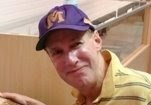There's a major - perhaps fatal - flaw in the big-PR-agency model. The flaw is the model itself. It really hasn't changed all that much, while the rest of the world has.
In my experience, big agencies often get caught up in bells and whistles, rather than substantive strategies. And this is true even in the pitching stage, before they even have the account.
As former Director of Public Relations for a substantial public company, I've sat through a lot of big-agency presentations over the years. And to say they were long on style and short on substance is a dramatic understatement.
True, they each trotted out their home-run hitters for the presentation...but we knew that, if we hired them, that would probably be the last time we'd see the big stars. The actual work would be done by minor-leaguers.
These presentations were invariably masterpieces of technical wizardry, meant to prove that this particular agency was on the cutting-edge of technology. And they piled on layer after layer of reasons why we should hire them...how wonderful they were, how talented, how "proprietary" their "advanced" systems were, how thrilled their clients were, their company's history, etc. (Suffice it to say that, after a half-hour or so of this, my eyeballs were not the only ones in the room that were rolling.)
What they didn't do, however, was to ask us about our needs. To ask us about our internal structures. To ask us about our goals and objectives. To ask us how we would measure results. To show us that they had any understanding at all of our company's history, or our company's clients, or our company's areas of pain.
They didn't ask questions. They didn't probe. They didn't show any interest at all in getting to know our company or our markets. They didn't show any interest at all in learning what we expected from an agency relationship.
And they didn't get our business, either. After sitting through a number of dog-and-pony shows, we decided to keep the work in-house.
It's dangerous to generalize, of course. But it just may be that, in this day and age, when swiftness and flexibility and real-time responses and fewer layers of management/accountability and increased personal initiative are required, that many larger agencies can't keep up. Or haven't learned how to keep up.
It just may be that many haven't yet learned that technology is - still - not as important as talent. That bells and whistles are - still, and hopefully never - as important as substance. That stifling corporate structure is not as effective - especially when a quick response/action is called for - as individual initiative. That top-down management is not as nimble as employee-empowered management. That bloated "org charts" and command-structures serve only to inhibit timely response. And that one pro who knows what he's doing is worth more than ten juniors who just push "send" buttons without having a clue as to the real principles of effective public relations practice.
No one should be saying that the era of the big agency is over. What I'm saying, however, is that these agencies need to do what the rest of us have been working on for a while now - change your structure, your management philosophies, and your operating systems to reflect the fact that we're in a new age. That things are changing - daily - and we must change with them. That what worked in the past will not work today.
That most clients, or potential clients, don't give a damn about what you did for others in the past...they only care about what you can do for them today. And that the best way to prove what you can do for them is by asking questions about them...not bragging about yourself.
If big agencies have the foresight and the strength - and the courage - to adapt to this new world, there's no reason they can't flourish.
But right now, in some cases, the big-agency model may be in need of some real structural overhaul.
Steve Winston
President, WINSTON COMMUNICATIONS
(954) 575-4089
steve@winstoncommunications.com
www.winstoncommunications.com
Thursday, July 16, 2009
Subscribe to:
Post Comments (Atom)

No comments:
Post a Comment